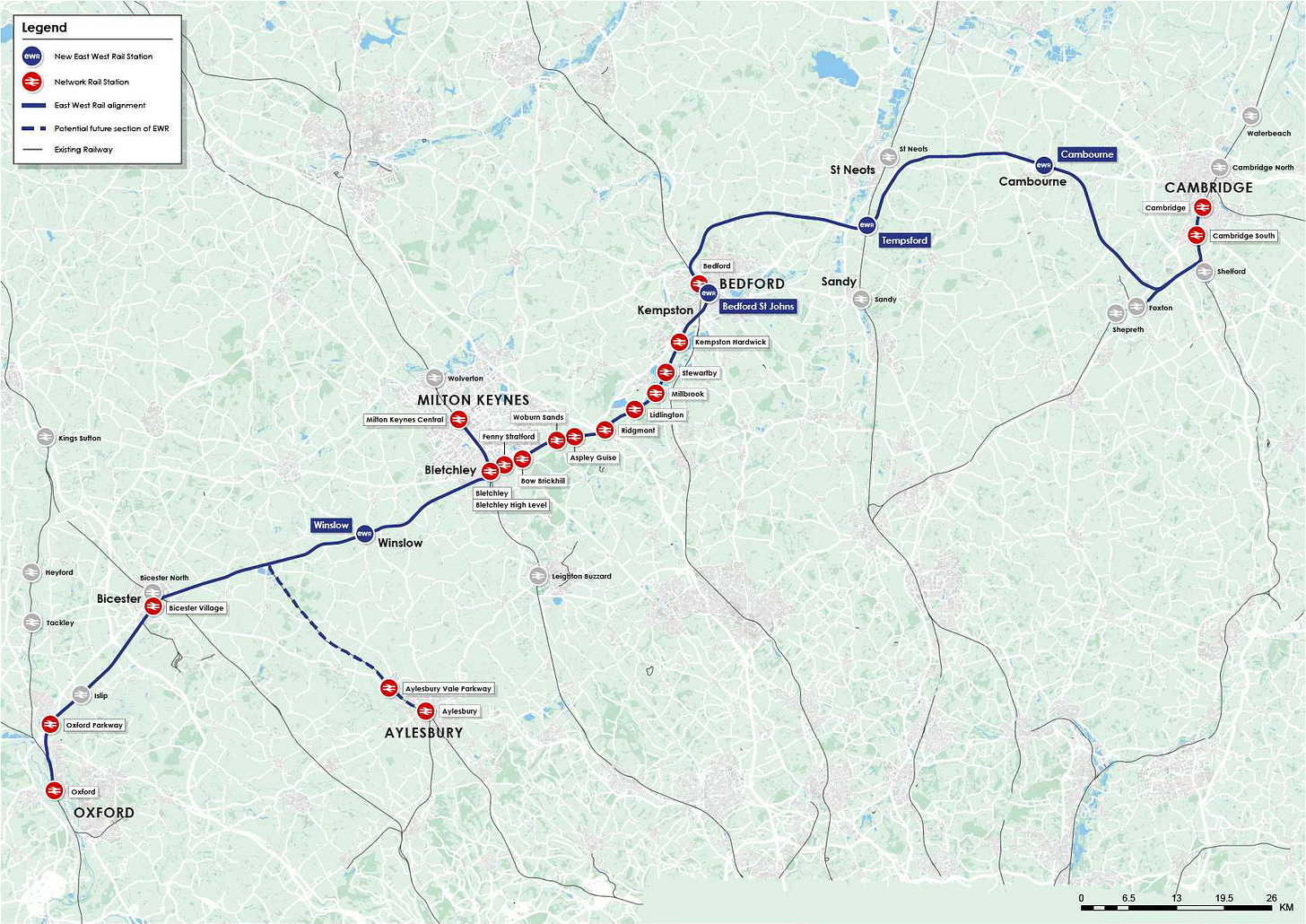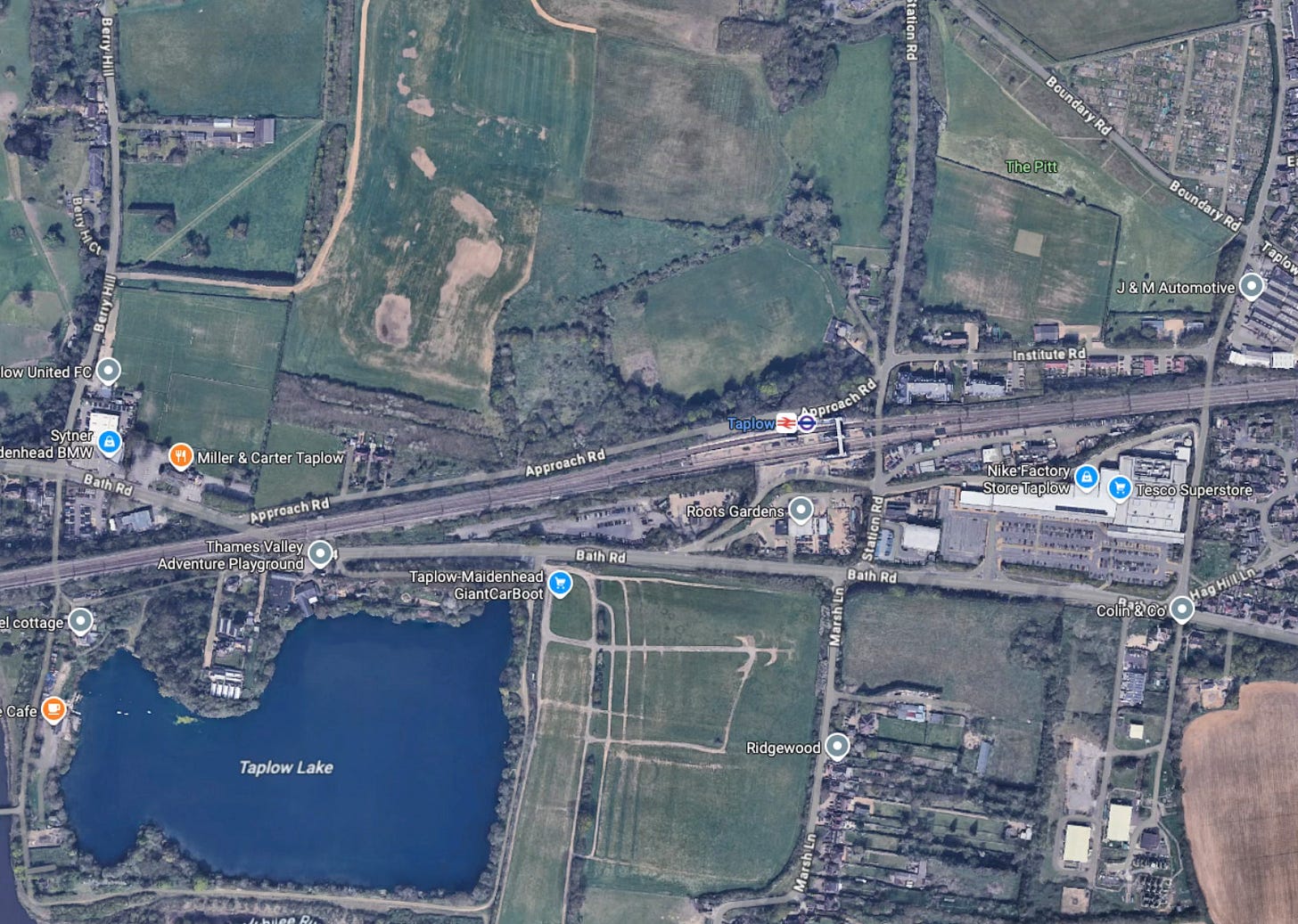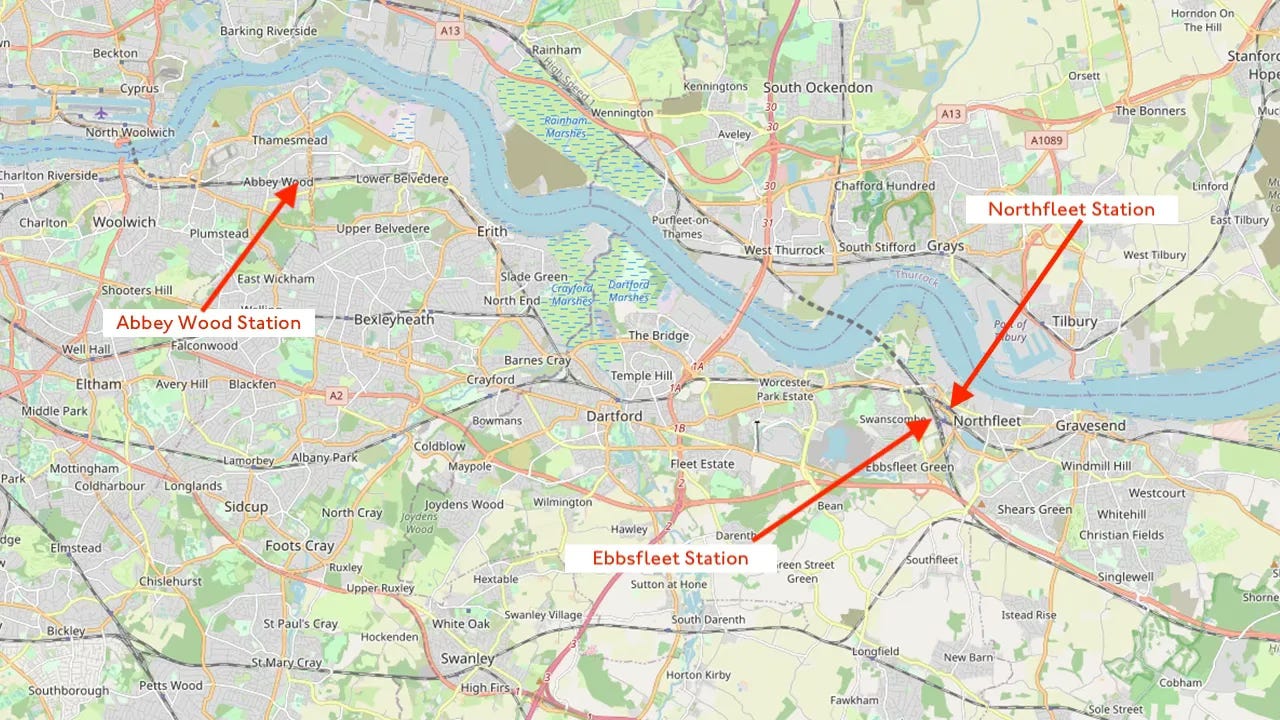What new towns can learn from Ebbsfleet
Britain's only real new town of recent years is both a cautionary tale, and a lesson in how to do it right.
POD! On The Abundance Agenda this week, Martin dissects Jeremy Corbyn’s new party, and wonders if it could save “HS3”. I share good and bad news about the fates of two major London transit-oriented housing developments – and explore the role of affordable housing requirements in both. And we speak to Lord Hunt of Kings Heath, who until very recently was the government’s nuclear minister about Sizewell C’s recent approval, building more nuclear – and building it even faster! Listen on Apple, Spotify or Substack.
In the not too distant future, we’re going to spend a lot of time looking at maps.
At some point in the next few months the government is due to publish a report by Sir Michael Lyons that will identify the places where we can build a new generation of New Towns – the development of which will be crucial if Britain is to meet its housing targets, and if we want any hope of making a dent in the housing crisis.
Obviously, we don’t yet know where he has selected, but that hasn’t stopped the wild speculation. For example, earlier this year Britain Remade and Create Streets published a longlist of potential sites.
The places they name cover the breadth of the country, but are concentrated in the south – and all of them are either close to existing railway lines, or are expansions of existing settlements with significant growth potential.
For example, one place suggested is Taplow in Buckinghamshire, which despite being a small town is home to a station on the Elizabeth Line. So building there is a no-brainer, when it has two trains per hour that travel directly through the centre of London, and where the station is surrounded by fields.
Another notable opportunity is the village of Tempsford, which is currently home to only 600 people, yet sits at the nexus of the East Coast Main Line and the under-construction East-West Rail line, which will eventually join Oxford and Cambridge.
In other words, it’s pretty much the perfect place to build a new town for 350,000 people, which is perhaps why the Chancellor has already given her tacit backing to building in the area – so this is a pretty safe bet, in terms of final recommendations.

Anyway, I think this is all extremely good news as we need to build New Towns. But this isn’t to say that I think that building them will be easy. We can see the challenges by looking backwards.
For example, the last generation of New Towns, built in the 1960s and 70s have a mixed reputation. Milton Keynes is too car-centric. And Stevenage and Telford are less quaint British towns, and more like transplanted Soviet brutalist monstrosities, which only the sort of weirdos who read articles like this one tend to like.1
And then there are the structural difficulties of building new communities. In fact, in the 60s the phrase “New Town Blues” was coined to capture the feeling of disconnection that new residents reportedly felt when uprooting and moving to somewhere that used to be fields.
That’s perhaps one of the reasons why more recently, we haven’t attempted to build many new settlements – and those we have tried have had limited success. For example, Northstowe in Cambridgeshire made headlines a couple of years ago as residents of the first 1,200 homes moved in to discover that their new town was little more than a housing estate, and that they were a very long way from any shops and services.
So as the government sets out to build a new generation of New Towns, it is going to have to act carefully to make sure they are designed and built in the right way.
This brings me to Ebbsfleet.
Located just outside of south-east London, close to the Dartford Crossing, “Ebbsfleet Garden City”, as the marketing calls it, is arguably the only semi-serious attempt to build a fully-fledged New Town this century. Work first began on the site in the early 2000s, and the plan is that eventually it will host 15,000 homes, and many tens of thousands of residents.
And incidentally, Ebbsfleet is a place I know a lot about.
Over the last couple of years, I’ve written about how it’s the perfect place to build more homes, as it’s on the High Speed 1 railway line – a mere 18 minutes from St Pancras and 11 minutes from Stratford.
And I’ve also covered its challenges, like the notorious “jumping spiders” that have slowed down development – and how the area is currently suffering from a seemingly unfixable broken road, which severs the new development in two.
So for the rest of this post, let’s dig into Ebbsfleet from a New Town perspective. Join me below the paywall as I explore what has worked, and what hasn’t – and figure out what it tells us about how to build a New Town from scratch.
This is going to be a good one if you like maps, infrastructure, urbanism and nerdy details. So now is a great time to take advantage of my summer sale – where you can get 20% off an annual subscription. If you value my work, and want to enjoy some nerdy infrastructure chat, then click this link:
Keep reading with a 7-day free trial
Subscribe to Odds and Ends of History to keep reading this post and get 7 days of free access to the full post archives.





